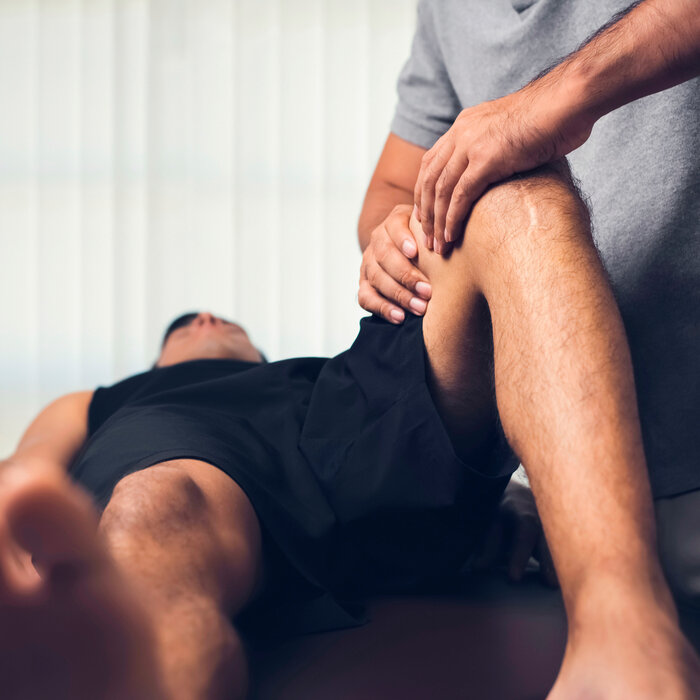Knee joint
The cruciate ligaments
Like all large joints, the knee joint is surrounded by a capsule of firm connective tissue. Together with menisci, ligaments and muscles, this stabilises the knee joint and guides its movements
The inner and outer ligaments serve as lateral stabilisers. They prevent the knee from buckling into a bow-leg or knock-kneed position, and limit the rotational movement of the knee.

Information flow between ligaments and muscles
The ligaments play an important role in exercise and sports – they stabilise and guide the joints.
In addition, numerous nerve fibres run inside them, which provide information about pressure or external influences. These sensors constantly report the position of the joint and the acting forces to the thigh and lower leg muscles. This important exchange of information supports the musculature significantly in the execution of movement and posture.
Disturbed control after cruciate ligament rupture
A cruciate ligament rupture thus impairs not only the mechanical stability of the joint, but also the control function of the ligament. Often a feeling of insecurity arises, which can be attributed to a disturbed joint perception. As a result, athletes may no longer be able to perform movements with the required precision.
Frequent sporting injury
Tearing of the anterior cruciate ligament is one of the most common knee joint injuries. About ¾ of the cases occur during sporting, especially during soccer or alpine skiing. A rupture usually occurs when the knee joint is simultaneously bent and twisted. The ligament will tear if the load exceeds its strength.
The ligament injury triggers an inflammatory reaction in the knee joint. The blood vessels become permeable to enable defence and repair processes. This causes fluid to leak into the joint and the injured tissue. This results in joint effusion, swelling, and limited mobility.
With the cruciate ligament, blood vessels are also torn, resulting in bleeding into the joint capsule. In contrast to bruises in the skin, the characteristic blue discoloration rarely occurs in cruciate ligament ruptures, as the blood remains trapped in the joint capsule and is therefore not visible.
At the moment of tearing, there is usually a sharp, but often only brief pain, which originates from the injured nerve fibres in the ligament. This often subsides after a short time. With the onset of swelling in the knee, however, the joint capsule comes under tension, which can cause a long-lasting second pain.
The torn cruciate ligament can no longer stabilise the joint. This creates an instability in the knee joint, which is often clearly perceived by those affected.
Cruciate ligament ruptures are often accompanied by further knee joint injuries. In many cases, the menisci, cartilage or collateral ligaments are affected. If, in addition to the rupture of the anterior cruciate ligament, the inner meniscus and inner ligament are also affected, we speak of an “unhappy triad”.
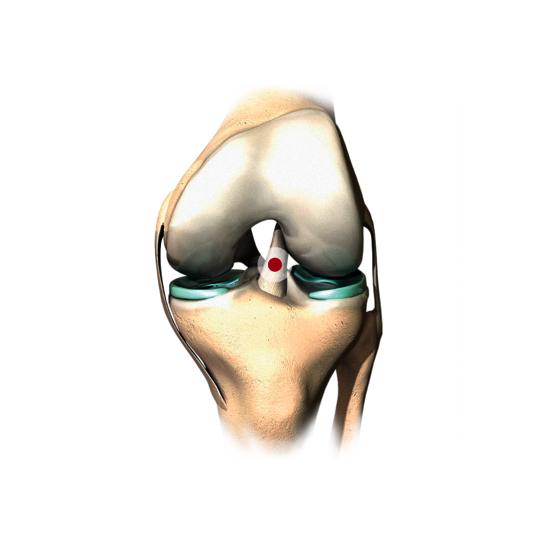
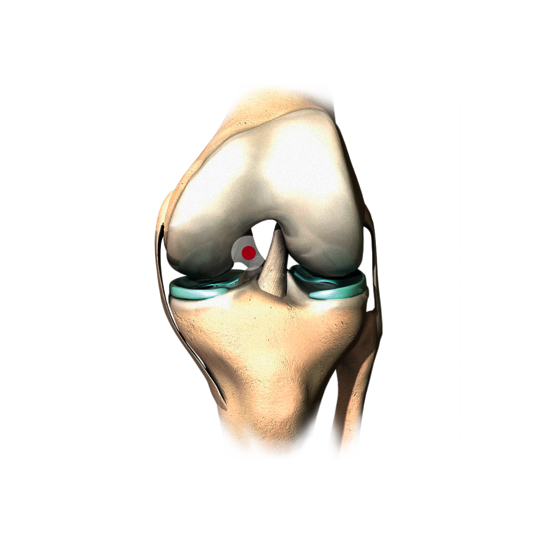
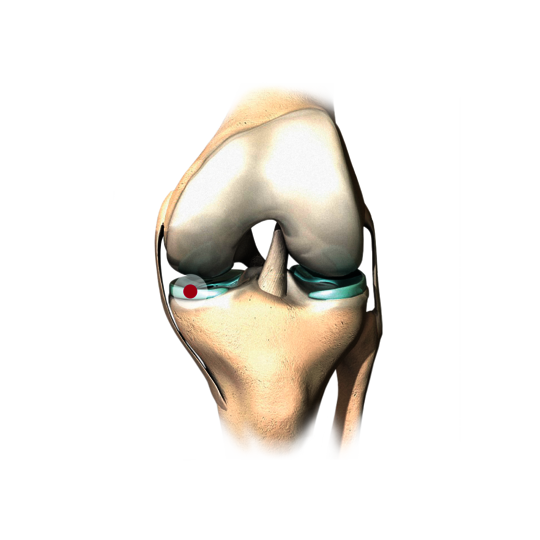
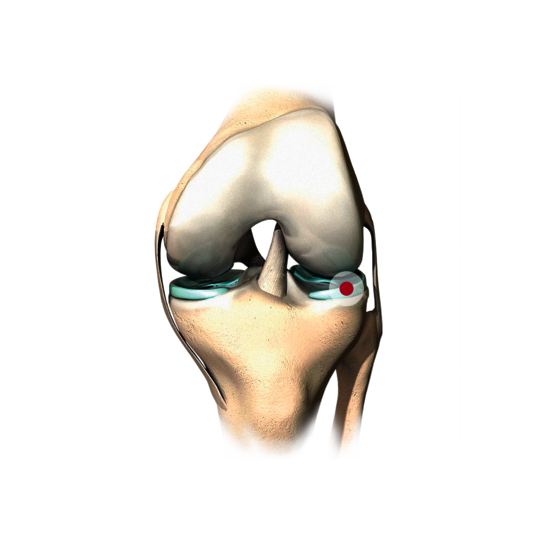
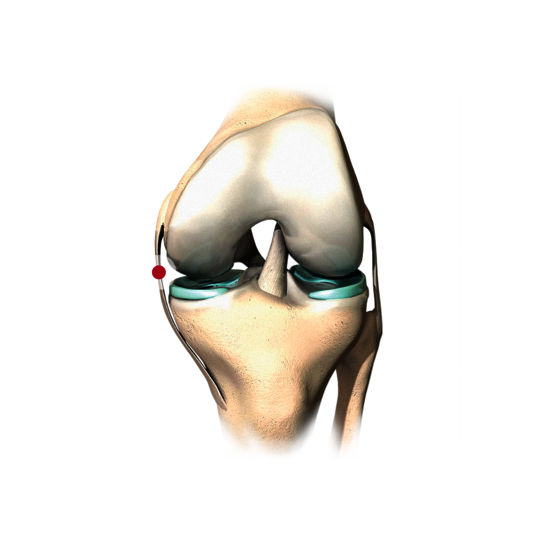
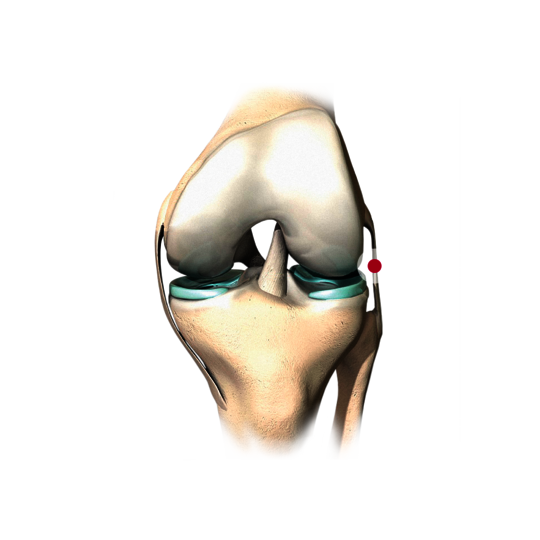

![[Translate to English:] [Translate to English:]](/public/_processed_/e/9/csm_Ligamys_S_im_Knochen_019865c5d5.png)
